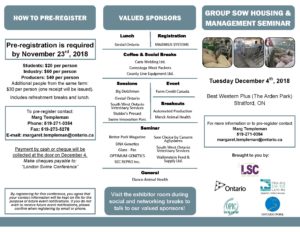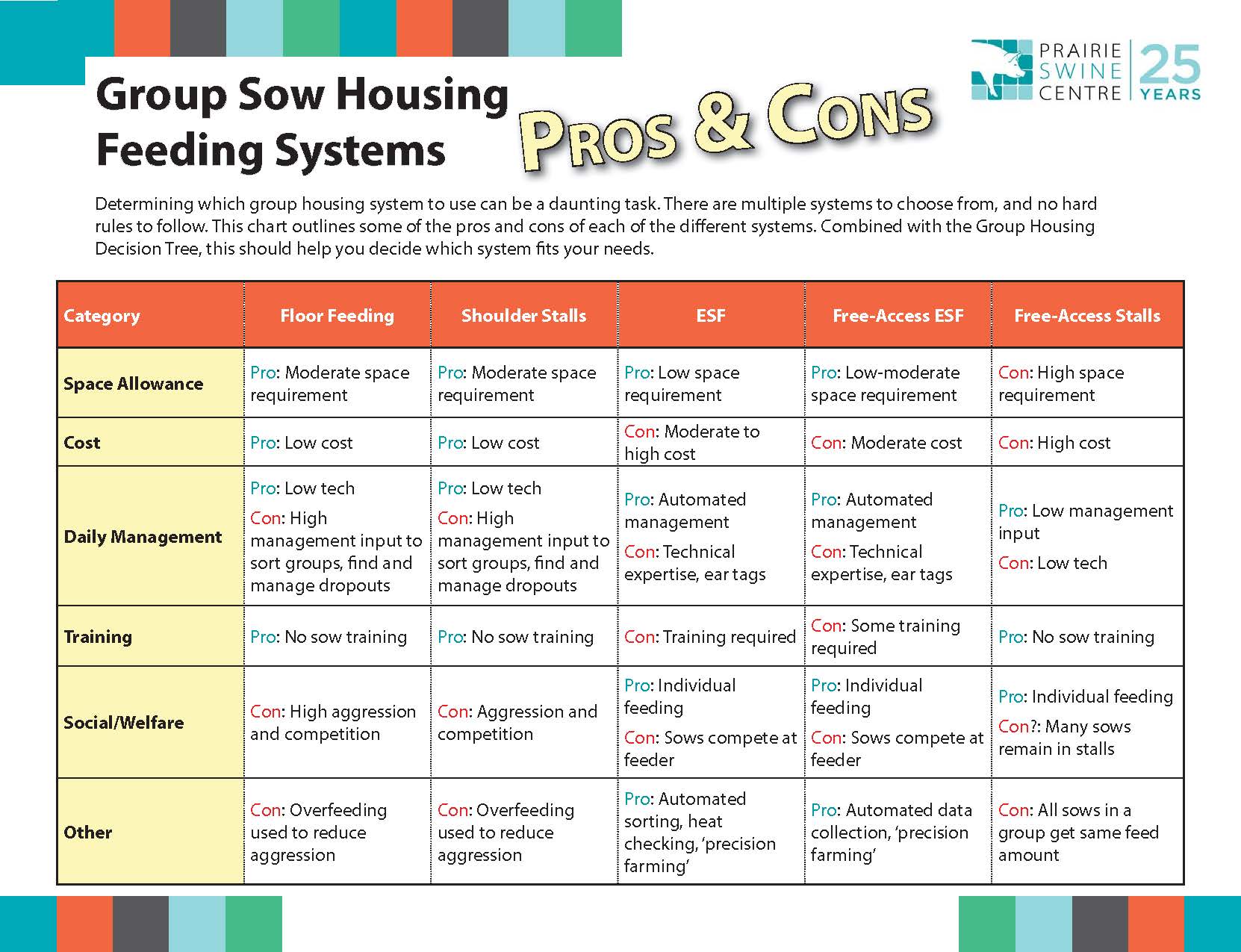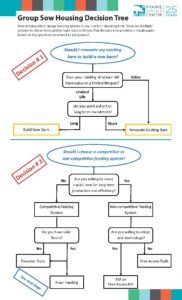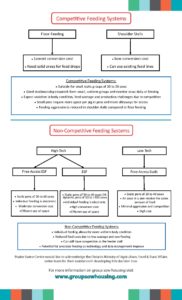Group Sow Housing Resources
Posted in: Pork Insight Articles, Prairie Swine Centre, Press Releases, Welfare by Ken Engele on November 23, 2018 | No Comments
Group Sow Housing & Management Seminar
Posted in: Pork Insight Articles, Prairie Swine Centre, Press Releases by Ken Engele on October 2, 2018 | No Comments
| View the full program here 2018 Group Sow Housing & Management Seminar Brochure |
 |
Prairie Swine Centre CEO Appointment
Posted in: Pork Insight Articles, Prairie Swine Centre, Press Releases by Ken Engele on April 16, 2018 | No Comments
Prairie Swine Centre
James Reesor, Chairman of the Board
Dr. Murray Pettitt Appointed New CEO of Prairie Swine Centre
FOR IMMEDIATE RELEASE
Saskatoon, April 12, 2018 – The Board of the Centre has announced the appointment of Dr. Murray Pettitt as their new CEO. Murray will assume responsibilities on July 1, 2018 and will succeed Lee Whittington, who is retiring after 26 years, the last 10 years as President/CEO.
Dr. Pettitt has been part of the swine research community for the past 21 years, and was previously employed at Prairie Swine Centre (PSC) for 10 years, managing Contract Research from 2003-2009. During that time he grew the program’s size and capabilities, while being responsible for the business development as well as the design and implementation of customer-driven research.
“It is like coming home – to be able to return to the Centre after 9 years pursuing my research interests in my area of specialization” notes Murray. “The position of CEO will allow me to further my interests in bringing science to agriculture, and adding to the long, successful history of Prairie Swine Centre’s service to the pork industry”.
Background:
Murray is from rural Manitoba and received his BSA in 1986 and his M.Sc. in animal reproduction in 1991 from the University of Manitoba. After three years at the Winnipeg Health Sciences Centre, he returned to agriculture to pursue research in boar sperm cryopreservation at the University of Guelph, receiving his Ph.D. in 1997. Murray accepted a post-doctoral fellowship at the Ontario Veterinary College where he helped develop practical embryo transfer techniques in swine.
In 1999, he assumed the position of Assistant Manager – External Research Services (also known as Contract Research) at PSC. Subsequently he became the Research Scientist – External Research Services from 2003 – 2009 where he was responsible for leading this program.
Since leaving PSC, Murray has been at the Department of Animal and Poultry Science at the University of Saskatchewan where he was responsible for managing a research program investigating markers of sperm function to identify the fertility potential of boars and bulls.
The Company:
Prairie Swine Centre Inc., located near Saskatoon, is a non-profit research corporation affiliated with the University of Saskatchewan, and is recognized globally for its contributions to practical, applied science, training and knowledge transfer in pork production with emphasis in the disciplines of nutrition, engineering, and applied animal behavior.
For further Information Contact:
Prairie Swine Centre
Lee Whittington
306-667-7447
-30-
2018 Prairie Swine Centre Producer Meetings
Posted in: Pork Insight Articles, Prairie Swine Centre, Press Releases by Ken Engele on April 6, 2018 | No Comments
2018 Producer Meetings
| Tuesday, April 24th
Strathmore, Alberta Travelodge Hotel 1150 – 350 Ridge Road |
Wednesday, April 25th
Swift Current, Saskatchewan Days Inn 905 North Service Road E |
Friday, April 27th
Niverville, Manitoba Niverville Heritage Centre 100 Heritage Trail |
Time: 10:00 a.m. – 2:30 p.m.
9:30 REGISTRATION
Lunch will be provided
PROGRAM
Feed Processing for Improved Production, Denise Beaulieu, University of Saskatchewan
- Feed processing can have significant impact on performance of your herd. What are the management strategies producers should examine within their milling to maximize mill and herd performance?
Exercising sows – What producers need to know?, Yolande Seddon, University of Saskatchewan
- Changes to the Code require producers in the future to provide periodic greater freedom of
movement to sows. Are sows motivated for a greater freedom of movement, and how can this be adopted on farm?
The Evolution of Genetic Potential, Daniel Godbout, PIC Canada Ltd.
- A walk through time to look where we were 50 years ago, what has been accomplished, how it has been accomplished and what the future holds. Pigs have changed dramatically and nutrition and management approaches have too. We need to bring it all together to achieve the greatest success.
Pig Tales – Ongoing Benefits of Colostrum, Leanne Van De Weyer, Zoetis
- Colostrum is critical for pig health and performance beyond the pre-weaning phase. What can producers do to ensure all piglets get their “fair share”?.
The NSERC IRC in Swine Welfare – Benefits for the pork value chain, Yolande Seddon, University of Saskatchewan
- The Chair is an opportunity to contribute to advancing sustainable production systems that will add to the scientific understanding of methods to improve animal welfare and identify progressive management approaches.
A Look Back – A Look Forward: Prairie Swine Centre at Your Service, Lee Whittington, PSCI
- In 2017 Prairie Swine Centre is celebrating 25 Years. We will take a walk through this period and examine the greatest accomplishments that benefits producers and where we are headed in the future?
To register for this seminar, please contact:
| Prairie Swine Centre would like to thank PIC Canada and Zoetis for their sponsorship and promotion of these meetings |
Protecting What You Have
Posted in: Pork Insight Articles, Prairie Swine Centre, Press Releases by admin on September 15, 2017 | No Comments
The reminders of the spread of PEDv across Manitoba the past 5 months remind us just how fragile our systems can be to external challenges. Current market prices and forward contracts have given us a well needed breather as an industry to rebuild/refurbish our farms and fix balance sheets. Is that current financial success holding us back?
What I mean – Are we taking threats seriously enough to actually change practices to protect our farms? This article is primarily health focused because we have had the opportunity to travel to many farms, conferences, open houses etc. the past 6 months and there is a disturbing complacency toward health threats emerging in our attitudes and practices in spite of the real threat PEDv represents. If you are reading this in southern Manitoba you are probably thinking that health is all we have thought about for months and yes we have changed and reviewed practices and everyone is on ‘high alert’. My concern is that outside of Manitoba we are not taking the same heightened awareness.
Two specific incidents come to mind. A packing plant tour is an excellent way to stay informed of how our product is transformed into food, this is particularly important for the students and staff at Prairie Swine Centre to help understand the larger industry. In 2014, several months after PEDv began wreaking havoc in the US, I was on a similar tour and everyone arrived with cleaned vehicles and were putting on plastic boot covers before they stepped out of their vehicle – in 2017 it was back to business as usual, farm vehicles in various states of cleanliness and not one pair of plastic boot covers to be seen. A second example was at a swine industry tradeshow, tractor trailers and goosenecks parked in the lot beside the passenger vehicles. It was not difficult to tell these trailers were swept out but not washed nor baked.
These two examples speak to my concern that we just aren’t using all the knowledge available to us to protect our farms.
At the same time I see headlines that tell us health challenges are all around us. Internationally Uruguay has identified PRRS for the first time in widely separated areas. The country undergoes regular testing so what happened? Closer to home, a PRRS virus variant previously associated with Minnesota is now in western Canada. Homegrown problems with Strep Suis seem to be on the rise. The Canada-West Swine Health Intelligence Network noted laboratories reporting an increase in positive cultures. Our own experience is that hot temperatures and extra movement and handling triggered a couple weeks of sudden losses that are not typical for this herd.
Our industry has enjoyed phenomenal growth in productivity and generally improving health status for several years. We know all too well that we cannot rely on continued access to antibiotics, and now additional scrutiny on zinc and previously copper in the EU promises to spill over and take yet one more tool from the troubleshooting toolbox. One editorial suggested 2.50 Euro per pig in reduced earning if Zinc Oxide became unavailable. These factors are all the more reason to keep the biosecurity high.
The following is sourced from the Canada-West Swine Health Intelligence Network Report July 31 regarding heightened biosecurity measures that should be considered as you review your biosecurity plan.
- Managing Transport –wash and bake trucks
- Managing any supplies, including feed ingredients and breeding stock coming from infected areas
- Compost deadstock (to reduce rendering traffic to your farm)
- Follow strict contractor protocols
- Participate in the environmental testing programs
Our Centre is undergoing another internal biosecurity audit. We do this about every 18 months to 2 years, rotating between internal and external audits. Every time we find something. This is time well spent to protect what we have.
Using creep feeding as a strategy to improve post weaning feed intake and piglet growth
Posted in: Nutrition, Pork Insight Articles, Prairie Swine Centre, Press Releases by admin on September 5, 2017 | No Comments
Overall, the provision of creep feed for 5 days prior to weaning had no effect on weaning weights or growth rate from day 21 to weaning, however, modest effects were observed on piglet growth rate in the nursery. Interestingly, within the creep treatment, it was the lighter piglets which took advantage of the creep feed, and this subset of piglets showed an improved growth rate. Therefore, the provision of creep feed in the farrowing room provides benefits to piglets that show evidence of consumption and it is the lighter-weight piglets which benefit most from the provision of creep feed, and thus within litter variability may be reduced.
Recommended Flow Rate & Height of Nipple Drinkers
Posted in: Pork Insight Articles, Prairie Swine Centre, Press Releases, Swine Innovation by admin on August 24, 2017 | No Comments
Science of Ethology
Posted in: Pork Insight Articles, Prairie Swine Centre, Press Releases, Welfare by admin on August 8, 2017 | No Comments
 The field of Animal Science experienced an expansion of its goals during and subsequent to the 1960s. Much of this shift could be explained by concern over the intensive production practices that had developed. In addition to the goals of productivity and efficiency, issues such as food safety, environmental protection, and animal welfare became issues for the public, and therefore the producer. Animal agriculture not only had to be efficient, but it had to be carried out in a socially conscious manner. Just as productivity and efficiency involved several disciplines, the new goals (impact on behavior and welfare) were also best addressed in a multi-disciplinary manner, including several new ones.not sure about this, can we be more specific?
The field of Animal Science experienced an expansion of its goals during and subsequent to the 1960s. Much of this shift could be explained by concern over the intensive production practices that had developed. In addition to the goals of productivity and efficiency, issues such as food safety, environmental protection, and animal welfare became issues for the public, and therefore the producer. Animal agriculture not only had to be efficient, but it had to be carried out in a socially conscious manner. Just as productivity and efficiency involved several disciplines, the new goals (impact on behavior and welfare) were also best addressed in a multi-disciplinary manner, including several new ones.not sure about this, can we be more specific?
Ethology, or the study of animal behaviour, has had a role during both eras of Animal Science. As the discipline developed within biology in the mid-twentieth century, its applied component studied means to improve productivity in farm animals. Although a relatively minor discipline of the day, its contribution to animal productivity included reproductive, maternal, social and feeding behaviours as well as environmental control. There were few scientists in applied ethology. In the 1970s only three Canadian universities had agricultural faculty for whom behaviour could be called their primary discipline.
With greater emphasis on social concerns, ethology took on an expanded role, particularly in the area of animal care and welfare. This goal is still multi-disciplinary (see chapter on Animal Welfare Science), but ethology has been the most widely recognized of those disciplines. Much of the work has been to determine how well an animal can adapt to its production environment. In meeting this need for welfare assessment the discipline of ‘applied ethology’ has to some degree become the discipline of ‘welfare science’. Many of its scientists have become proficient, through personal training or collaboration, in disciplines such as stress physiology, immunology and environmental management.
However, the discipline also retains a strong production component. As consumers demand a change in production practices, ethology joins with other disciplines in finding ways to produce efficiently under the new standards. As an example, prod-free handling has become the standard for most situations in the pig industry for reasons of both welfare and meat quality. Ethology has contributed to this transition in management through facility design, handling methods, and training of personnel.
The bulk of this publication is on sow housing and management. Once the industry within a country decides to move to group housing, the role of ethology has been to develop facilities and management methods to ensure efficient production within those systems. Thus we now talk of grouping strategies, mixing vs feeding based aggression, and competitive vs non-competitive systems. All of these are based on behavioural principles.
Group Sow Housing Seminar – September 12 (Winnipeg, MB) & September 13 (Strathmore, AB)
Posted in: Pork Insight Articles, Prairie Swine Centre, Press Releases by admin on June 29, 2017 | No Comments
Download the pdf version of the agenda here
Bringing Precision Agriculture to the Pork Industry
Posted in: Pork Insight Articles, Prairie Swine Centre, Press Releases by admin on June 6, 2017 | No Comments
Precision farming is now a commonly accepted term. In a decade, it has become the standard in pursuit of best management practice. Precision agriculture is a way of thinking about your farm and it is raising the bar for the whole industry on what is possible to measure and thus manage. It includes all aspects of arable farming, from seeding rate to spraying only spots that require it, to continuous yield monitoring on combines replacing the grain weigh buggy. The data stream coming out of this technology places resources such as fertilizer or pesticide just where its required-and creates a database that allows analysis for impact of environmental (soil, moisture) conditions. In short, allocation of expensive resources linked to collection of yield data. I expect that nothing will push net income up quicker on well-managed farms, and thus reinforce to management the value of the technology.














